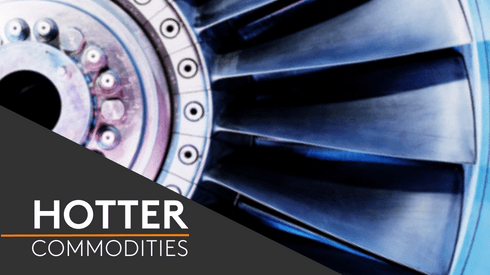The export control was first announced by China’s Ministry of Commerce in July 2023, to “safeguard national security and interests”. Between August and November, the country’s exports of gallium were significantly down on their historic levels.
China produces the overwhelming majority of the world’s gallium.
The 7,030 kg of gallium exported from China in December is the highest monthly volume since the export control was introduced, and close to the 2022 average of 7,900 kg.
But a significant shortfall in overall supply persists and market participants deny a return to the pre-export control normal market conditions.
Gallium is essential for a number of technologies, including some in geopolitically sensitive areas.
Gallium arsenide (GaAs) is commonly used in semiconductors in mobile phone wireless and broadband communications.
Another gallium-based compound, gallium nitride (GaN) has important applications in telecommunications where it is used in 5G mobile network masts and in the charging infrastructure for electric vehicles.
Gallium is also largely used in the production of rare earth neodymium iron boron (NdFeB) magnets for electric vehicles. China is currently the world’s largest producer of both rare earths and rare earth magnets, though other countries are aiming to ramp up production of both.
Gallium also has important military applications. “Gallium-based semiconductors are vital to the US defense industry, particularly in next-generation missile defense and radar systems, as well as electronic warfare and communications equipment,” according to the Center for Strategic and International Studies.
Fastmarkets understands that much of the material exported in December was higher-purity gallium, predominantly for semiconductor consumption.
Traders left in the cold
Under the export control, exporters must provide Chinese authorities with details about the final end-user of the material.
This effectively bars non-Chinese traders from building unassigned buffer stocks of Chinese origin gallium to protect against supply disruption, market participants have told Fastmarkets.
Gallium orders also face extended lead times under the export controls, and multiple market participants said that after contracts are inked, it generally takes over one month for exports to be approved.
Additionally, requirements and timing for export approvals are relatively unclear, lacking precise standards or patterns, sources told Fastmarkets, further contributing towards uncertainty.
“It feels like the approval process tightened again after November, including towards Japan and South Korea,” a Chinese gallium trader said.
“Also, I haven’t heard about many new companies obtaining export licenses,” the trader added.
Prices mostly stable
Despite softening earlier in January, gallium prices in Europe have largely remained stable since, and did not immediately respond to news of the improved export volumes from China in December.
Fastmarkets assessed the price for gallium 99.99% Ga min, in-whs Rotterdam at $500-550 per kg on February 2, unchanged since January 19, though down from $500-600 per kg on January 3.
The weekly assessed price for gallium 99.99% Ga min, in-whs China was also stable, at 2,150-2,250 yuan ($299-313) per kg on February 2.
Overall, China’s gallium prices have fluctuated, but remained largely rangebound through January, with the 2,150-2,250 yuan per kg being only slightly below the 2,200-2,300 yuan per kg assessed in the first pricing session of the year, on January 5.
Chinese and European gallium prices decoupled after the export control came into effect, with supply tightness in Europe and soft demand in China said to be driving the price disparity.
Despite the uptick in December 2023, the year’s total export volume remains well below former years. A total of 44,747 kg of gallium were exported from China in 2023, less than half the 94,399 kg exported in 2022.
Geographical disparities
Exports have so far largely been concentrated to certain destinations, creating significant price disparity.
Market participants in the US observe price support and supply tightness. China has not exported any gallium to the US since the export controls came into effect.
Gallium prices in the US have long been higher than those in Europe, owing to the 25% import tariff introduced on Chinese gallium in 2018, at the start of the US-China trade and technology war in 2018.
There are reportedly still some stocks of gallium available in North America but participants in the region warn that the supply of this material is insufficient to meet overall demand.
A market participant in China, previously active in exporting gallium to North America, observed a long wait time for export licenses to the region, and downplayed the significance of the higher December exports.
“The export data for just December doesn’t really represent much,” the contact said, “some licenses applications submitted quite early are still pending approval, it’s been four or five months now.”
Shortly after the export control was announced, Luisa Moreno, president and director at Defense Metals and strategic minerals specialist told Fastmarkets that the restrictions would be detrimental to the cost-effective manufacturing of advanced semiconductor chips in the US in the near term.
According to the United States Geological Survey (USGS), the country imported some 9,400 kg of gallium metal in 2023. Between 2019 and 2022, China was the country’s second-largest import source for gallium and gallium wafers, contributing 21% of the overall imports.
Discover our rare earths prices and insights to stay ahead in this volatile market
Find out more about Fastmarkets’ rare earths prices and insights here.





